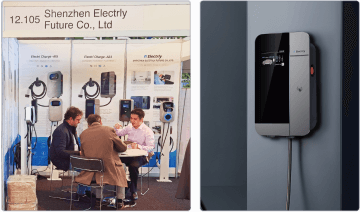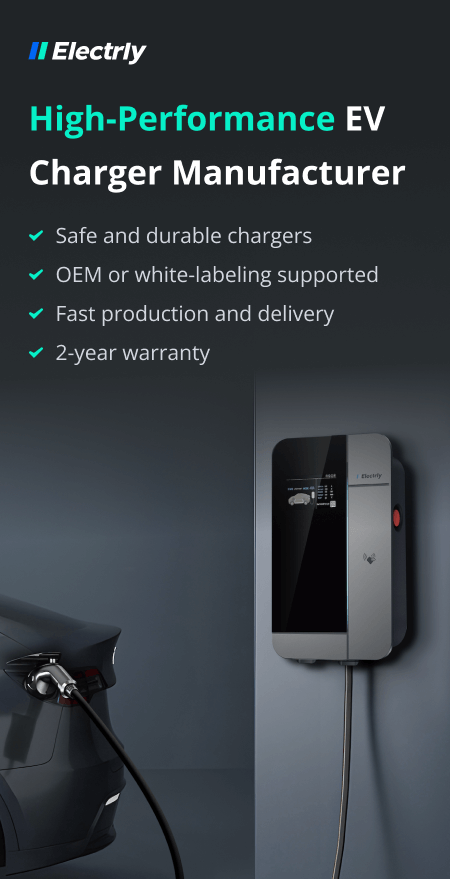Owning an electric vehicle comes with the significant benefit of being able to charge it at home. It provides convenience, affordability, and ease of use compared to using public charging points. Knowing that you can charge your EV at home and have it ready for the morning commute reduces range anxiety and keeps your battery at the desired level. To install a home EV charging station, it is essential to understand the costs, incentives, and other necessary information.
Can You Charge Electric Cars at Home?
Of course, you can. Most EV owners list it as the most practical feature since they don't need to spend time at charging stations. All kinds of electric or PHEV vehicles can be charged at home. You can start with a Level 1 charger that plugs into your standard outlet, or you can upgrade to Level 2, which will provide faster charging. There is also a Level 3 charging, designed to provide the fastest times, but they are rarely used in homes.
How to Charge an Electric Vehicle at Home?
Charging your electric vehicle at home is a straightforward process. You can easily charge your car by pulling it into the garage and connecting it to a charging cable. For basic Level 1 charging, you can plug your car directly into an outlet.
However, for Level 2 charging, you'll need to use a wall-mounted charger that comes with a line to connect to your vehicle. Charging times will vary depending on the level of charging you use — Level 1 charging will take longer compared to Level 2 charging, which can charge your EV much faster.
Every new EV comes with the standard system, which equals Level 1. However, some owners opt for an upgrade (Level 2), which is more powerful. If you own PHEV, the charging procedure is the same. Just plug it in in your outlet. However, due to the smaller battery pack and capacity, plug-in-hybrid owners don't need to upgrade to Level 2.
What Are the Different Levels of Charging Units?
There are three basic levels of charging units according to their capacity which is named Level 1 to 3. We will explain the basics behind each of them.
- Level 1 - It is the basic level, and every new vehicle is designed to accept Level 1 charging. This system has a 110 – 120 volt capacity and plugs into a standard household electric outlet. It is the most affordable option but also the slowest, with just a 3-5 miles/per hour capacity. This means that your average EV will not be charged overnight, but for most PHEVs, Level 1 is just enough.
- Level 2 - The Level 2 charging is a significant upgrade that requires professional installation and raises the voltage to 240 volts. For most EV owners, this is the preferred type of home charger since it delivers 12 to 80 miles per hour. Using Level 2 will fully charge your battery overnight, which is very important. Due to higher voltage, charging your EV will be more expensive, but it will be much faster.
- Level 3 - This is the fastest type of charger but also the most demanding and complicated. Level 3 uses direct current at 400 to 480 volts which is industrial-grade electricity, hence not suitable for home use. The Level 3 is commonly known as a supercharger owing to its capacity to charge the battery at a stunning rate of 3 to 20 miles per minute! Also, Level 3 is the most expensive due to advanced technology.
Why Is Level 2 the Best Option for Residential EV Charging?
With short charging times, upgraded voltage, relatively affordable installation, and easy use, Level 2 is the perfect choice for EV owners who regularly use their vehicles. It will provide you with overnight charging and still be far more convenient and cheaper than going to Level 3 locations or spending countless hours on Level 1 and still having range anxiety.
Level 2 is also a recommended type of charging by many EV manufacturers due to its power. Some electric car companies even offer their Level 2 chargers for the best performance and perfect fit. This should also be considered when shopping for EVs.
How to Install a Level 2 EV Charger at Home?
There are a few simple but essential steps before you start charging your EV with the Level 2 charger. Here are how you should approach the process of installation.
Consult an Electrician
To have a comprehensive assessment of Level 2 possibilities, you first need to consult an electrician about the basics. What permits do you need (if any), what exact type of charger system do you want, upgrades to the electric panel, and whether it has the capacity for an upgrade?
Find the Exact Spot for the Charger
Since the location of the Level 2 charger will be fixed, you need to decide where it will be mounted. You should always take into consideration the length of installations, space in the garage, the number of vehicles parked there, and so on.
Find an Installation Company
Finding a Level 2 installation company will give you the exact price and time frame of the job required. You can also contact the EV companies in your area for tips, discounts, and advice on how to install the Level 2 home charger cheaply and efficiently.
Choose a Rate and Start Charging
Numerous electric companies have different rates. Before installation, you should carefully review all offers and choose the package that suits your needs.
How Much Does It Cost to Install an EV Charger at Home?
Before giving you the exact cost of the Level 2 charger installation in your home, you should understand that the price will vary depending on several factors.
First of all, do you want to install a plug-in or hardwired type of charger? Second, the construction of the garage or whether the charger will be installed outside. Sometimes the existing installation needs work to accommodate the new device, and sometimes the installation is more complicated.
All of that will raise the price of putting the Level 2 charger in your home. The price range for the complete job goes between $700 and $2000, depending on the above-mentioned factors. Also, it is essential to say that you should always let professionals do the work, even if you can do it yourself. It is for safety reasons.
The good news is that many states across the United States provide incentives to support the installation of Level 2 chargers at home, which can help to reduce overall costs. Typically, these rebates range from $350 to $500.
Additionally, there is a Federal tax credit available for 30% of the total cost, which includes both hardware and installation expenses, up to a maximum of $1,000. To determine the amount of tax credit that you may receive, you can refer to IRS form 8911, and it is crucial to retain your receipts to use when you file your taxes.
How Long Does Charging an Electric Car at Home Take?
With Level 1, charging your EV can be painfully slow. Sometimes up to 20 hours to fill an average battery pack. In most cases, this is unacceptable. However, with a Level 2 home charging system, 5 to 7 hours should be enough to charge your electric vehicle's battery fully.
What to Look for When Choosing an EV Home Charger?
Even though most EV home chargers look the same and have the same purposes, some differences should be considered before deciding. We can help with choosing the right one if you follow our guide.
Energy Efficiency
This is the first and foremost characteristic to consider. Yes, the Level 2 EV home charger will significantly raise your electricity bill, so you want an efficient charger that will keep your monthly bill under control.
Easy to Operate
More than half of all EV users state that ease of use is among the most important things when choosing a home charger. We can understand why. You want a dependable and simple system that does exactly what you want it to do. Avoid unnecessary options and overly complicated working procedures, and concentrate on home chargers that are straightforward and easy to use.
Warranty and Maintenance
Since the home EV chargers are relatively new devices working under high voltage, warranty, and servicing are fundamental aspects when purchasing. They are also quite expensive and include a complicated installation process for most owners; extended warranty and good servicing options can be the decisive moment when shopping for an EV home charging station.
Controlling the Costs
Interestingly, a desirable feature of EV home chargers is the option of insight into charging behavior and associated costs. A lot of EV owners want to be able to know precisely how much the charging costs when the energy prices are lowest and the exact percentage of battery life. We agree that those are relevant pieces of information all EV owners need to know. So, when deciding on an EV home charger set, choose one which can display all those information to you.
Conclusion
It is easy to understand why home chargers are an integral part of the future of electric vehicles. They are easy to use, accessible, and powerful enough to reduce charging times, which is ideal for all EV owners who use their cars daily and require sufficient battery levels. Level 1, although the most affordable, is not enough for most users, so upgrading to Level 2 home chargers makes perfect sense.


